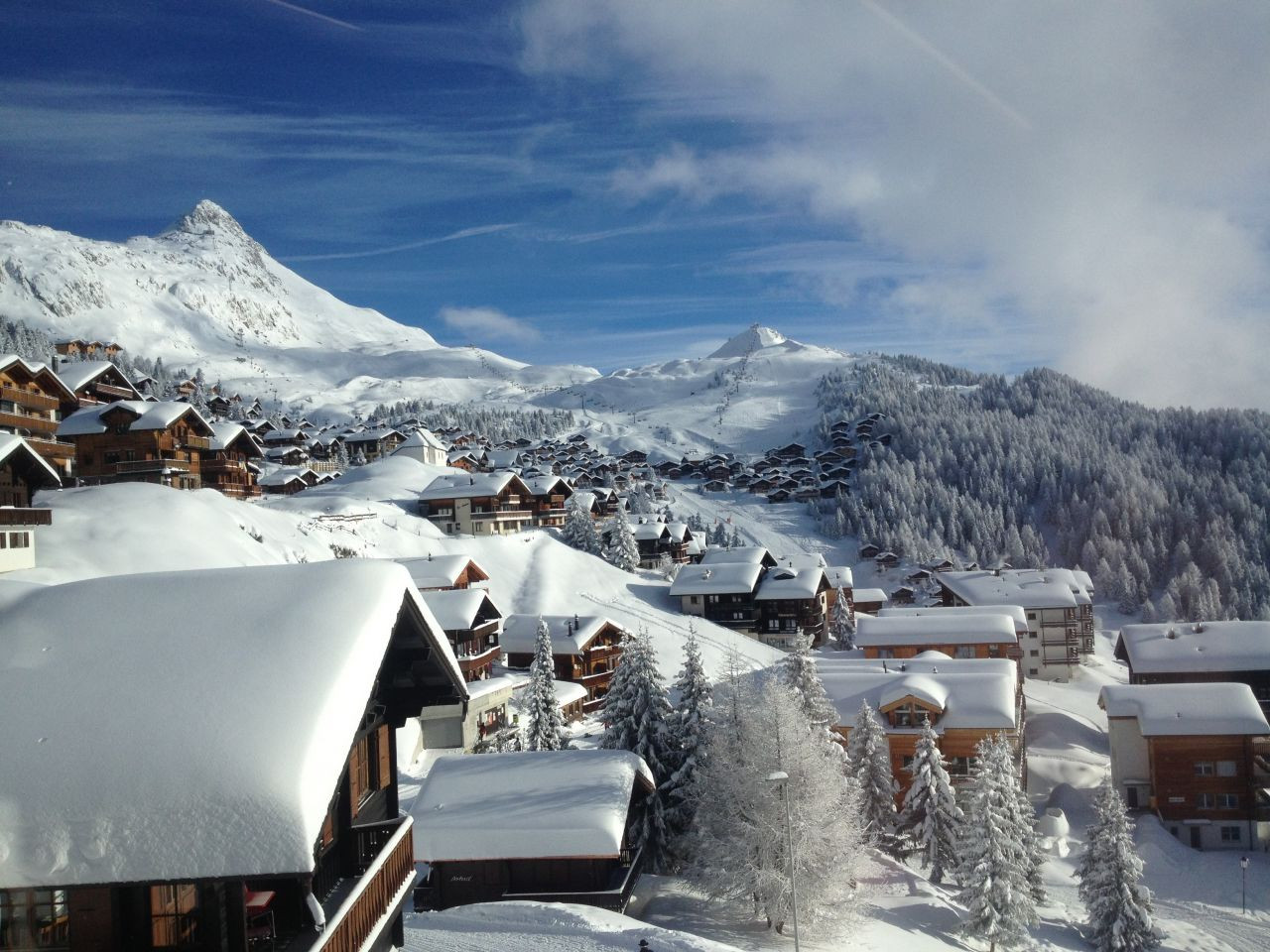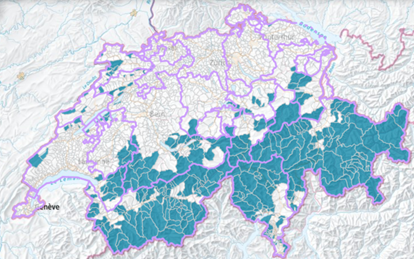Second Homes in the Alps - Blessing or Curse?
Written by Jari Kern & Kaspar Marugg, students of the University of Zurich
Roughly ten years ago, in March 2012, Swiss citizens were asked to vote on a referendum concerning second homes. The committee which launched this referendum demanded that the share of second homes in any commune in Switzerland should not surpass a limit of 20%. Once this limit is reached, no further building licenses for second homes will be issued. The referendum was accepted with a narrow margin of 50.6% of votes in favor.
What is striking when looking at the results is the stance of the large Alpine Cantons: The Valais, the Grisons and Ticino all rejected the referendum, the first with an overwhelming 73.8%. As can be seen in Image 1, nearly every commune in these Cantons is affected by the new regulation. (Bundeskanzlei)
The results of this vote highlight a further area of conflict between the population in the Mittelland and in Alpine regions. While most second homes in the Swiss Alps are owned by people from urban regions (Sonderegger & Bätzing 2013: 7), it is just this urban population that voted against the will of the Cantons and Communes where these second homes are located. The main line of conflict extends between the claims to protect rural areas from urban sprawl, expressed mainly by the urban population that considers the Alps as a common for the entirety of Switzerland, versus the demand for protection of economic interests in remote areas, a position taken usually by the "endogenous [...] mountain dwellers" (Petite 2013: 5) who consider interferences from other regions uncalled-for (Petite 2013). For the Valais, it is estimated that 50% of all investments in the construction sector arise from second homes, thus posing as a vital economic factor (Sonderegger & Bätzing 2013: 2).
However, the imagination of these "localists" (Petite 2013: 5) as self-sufficient is spun around by Gantenbein (2012), who argues that the (tourism) industry has been brought to the Alps by lowlanders, and thus environmental protection of the Alps from urban sprawl will also come from this demographic. For Schuler and Dessemontet (2013: 17) the result of this vote is a warning sign for a loss of respect of regional sensitivities and of the "country [becoming] less egalitarian, but more competitive."
Looking at the effects the new law had until now, it becomes apparent that neither of the seemingly irreconcilable positions portrayed above has been proven entirely right or wrong. While the new regulation has led to a slight reduction of area covered by second homes, it did not lead to zero growth due to several mechanisms allowing exceptions from the law. On the other side, the construction industry was also not hit as badly as some advocates were warning during the campaign period. (ARE & SECO 2021)
However, conflicts between different stakeholders about the sovereignty of interpretation concerning alpine regions will persist. This also goes for the debate about second homes, the question whether they are a "blessing or a curse" (Sonderegger & Bätzing 2013: 2; translated) will "hardly ever be answered and keep its rhetorical character in the future as well." (ibid; translated)
Bibliography:
Papers:
Petite M (2013): Mountain dwellers versus eco-freaks. An nth manifestation of the conflict in the context of the Weber initiative. Journal of Alpine Research/Revue de géographie alpine; Hors-Série.
Schuler M & Dessemontet P (2013): The Swiss Vote on Limiting Second Homes. Journal of Alpine Research/Revue de géographie alpine; Hors-Série.
Sonderegger R & Bätzing W (2013): Zweitwohnungen im Alpenraum. Tourismus, Freizeit, Abwanderung und Zweitwohnungen im alpenweiten Zusammenhang. Journal of Alpine Research/Revue de géographie alpine; Hors-Série.
Newspaper articles:
Gantenbein K (2012): Die Goldmine in den Bergen schliessen. WOZ - Die Wochenzeitung; 1. März 2012 (9).
Governmental publications:
Bundeskanzlei: Vorlage Nr. 555. Resultate in den Kantonen. <https://www.bk.admin.ch/ch/d/pore/va/20120311/can555.html> (last accessed 18.11.22).
ARE Bundesamt für Raumentwicklung & SECO Staatssekretariat für Wirtschaft (2021): Wirkungsanalyse Zweitwohnungsgesetz. Bericht an den Bundesrat.
Image:
Figure 1: Screenshot from <map.geo.admin.ch> (18.11.22) with the masks Wohnungsinventar and Kantonsgrenzen.
Related Posts
Comments
By accepting you will be accessing a service provided by a third-party external to https://www.mountainapp.net/
This website uses no external trackers, no analytics, just session cookies and values your online privacy.




